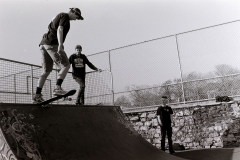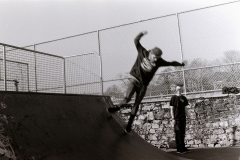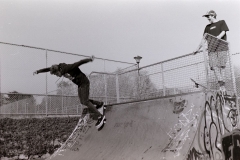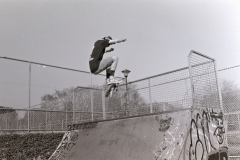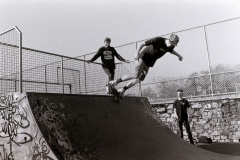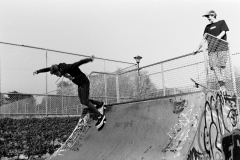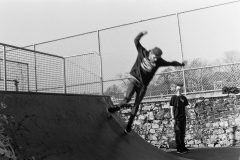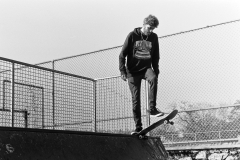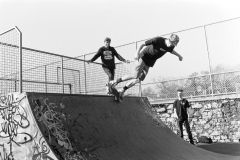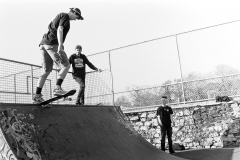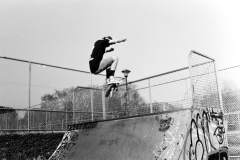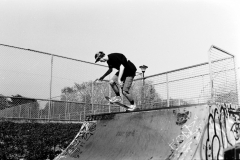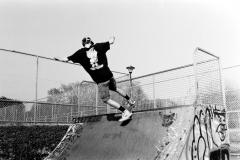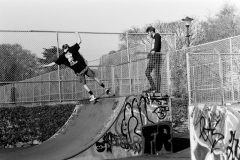Not being able to accurately digitise film makes it pretty difficult to work out if you actually took good pictures or not. Was the focus off, was the lighting good, was the subject matter sufficiently interesting to even bother! This is exactly the position I found myself in recently when I decided to experiment with B&W film and an old Pentax KM SLR that had been sitting in the cupboard for 40 years plus. Truth was, I was really keen to experience the whole emotional journey of taking the photos, developing them and finally, digitising them.
Now each part of that journey has challanges. For example, taking the photos is not quite as simple as pointing a modern digital camera at the scene and pressing the shutter. For those of you you that have experimented with the manual settings on your digital cameras you’ll know exactly what I mean. There’s a lot to think about with an SLR, especially if you have a fully manual lens attached. Firstly there’s managing the light. Old SLR’s such as the Pentax KM expose for the average light entering the lens. That means that providing the light is well managed the highlights aren’t blown and darks aren’t too dark. However, all too often the sky loses detail and the shadows can be a little too dark. Unlike digital though, it’s really difficult to pull any details out of areas that are too dark or too light. Getting the right exposure then becomes an art form and it’s the reason you used to see good photographers use external light meters in order to work out the best exposure for the scene they were photographing. The second problem is capturing an image worth the effort. With digital we are in “a throw away society” and any image not up to standard, whether through poor composition, poor exposure or poor subject matter, is tossed in the bin. Follow that same approach with film and I guarantee you that you’ll have only 5 or 6 decent images out of 36. You simply can’t leave anything to chance with film. Finally, there’s any number of things that can go wrong from poor focus through to incorrectly developing the entire batch. Trust me, you need nerves of steel to get something good with film.
Taking everything above into account, the images below are from my earliest experiments with film, in this case Ilford FP4 Plus 125.I chose FP4 because I liked the look of various images I had seen on Pinterest etc so it seemed a good start point. My very first roll had been Kentmere 400 but while I got some images from this roll, I wasn’t hugely impressed, either with my compositions or my focus. I chose to use the Pentax 50mm f1.7 for that roll and I had some difficulties with nailing focus. With the FP4 I chose to use the Minolta 35-70 f2.8-4 and the results from this lens are shown below. I think that here focus was a lot sharper plus the various images had some interest. Hopefully, you’ll agree.
The gear used to achieve these images was as follows:
- Pentax KM SLR (circa 1980)
- Minolta 35-70 f2.8-4
- Ilford FP4 Plus 125 36 exposures
- Bellini Hydrofen developer & Bellini FX100 ECO fixer
- Home built flash-lit digitising rig using Nikon D600 and Tamron 90mm f2.8 1:1 Macro lens
